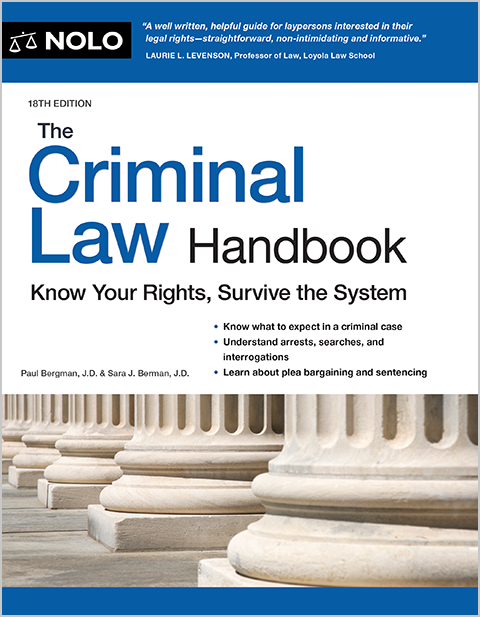Discover when CMT, a disorder characterized by "Charcot foot" deformation and nerve damage, is considered a disability.
Charcot-Marie Tooth (CMT) disease is a hereditary condition that affects the nerves controlling leg movements. CMT causes leg muscles to weaken and atrophy over time. Common symptoms of CMT include an arched foot ("Charcot foot") that results in pain while walking and standing, bilateral "foot drop" (dragging your feet on the ground), and numbness in the legs. The disease can eventually spread to the hands and arms, causing a loss of dexterity.
There isn't currently a cure for CMT. Symptoms are often treated similarly to those of a related disease, muscular dystrophy, with doctors typically prescribing physical therapy, surgery, and foot braces to assist with walking. If your CMT symptoms are severe enough to keep you from working full-time, you may be eligible for disability benefits.
Is CMT or "Charcot Foot" Considered a Disability?
The Social Security Administration (SSA) awards disability benefits to people who have medically determinable impairments that last for at least one year and significantly interfere with their ability to work. Under the SSA's five-step sequential evaluation process, the agency will obtain and review your medical records to determine whether you satisfy the criteria of a "listed impairment" or have functional limitations that rule out all jobs.
Qualifying for Disability By Meeting a Listing
The SSA maintains a listing of impairments—also known as the "Blue Book"—for disorders that the agency considers especially severe. If you meet the medical requirements for a disability listing, you'll be found disabled automatically, without having to show that you can't do any jobs.
Disability claims examiners and administrative law judges can evaluate CMT under listing 11.14 for peripheral neuropathy. Peripheral neuropathy refers to any injuries to the nerves that send information from your extremities (arms, hands, legs, and feet) to your spinal cord. In order to meet listing 11.14, you'll need to provide medical documentation of one of the following:
- disorganization of motor functioning in two extremities that prevent you from independently performing basic movements such as standing up from a seated position, balancing while upright, or using your upper limbs effectively, or
- a "marked limitation" in both physical and mental functioning, including your ability to understand information, interact with other people, focus on tasks, adapt to changes, and manage yourself.
For example, if you need to use an ambulatory aid (such as a walker or bilateral crutches) in order to get from one place to another, you're likely to qualify for disability due to CMT because you meet the "disorganization of motor functioning" section of listing 11.14. Or if you find it slightly easier to physically maneuver around—say you use a single cane instead of a walker—but you have great difficulty maintaining personal hygiene because of weakness in your hands, you may qualify under the "marked limitations" section of the listing.
Qualifying for Disability With a Reduced Functional Capacity
Even if you're not automatically found to be disabled under the listing for peripheral neuropathy, you can still qualify for benefits if Social Security determines that you can't do any jobs with your current residual functional capacity (RFC). Your RFC is a set of restrictions that reflect the most you can do, physically and mentally, in a work environment.
What's In Your RFC? People with nerve disorders such as CMT will almost certainly have an RFC that contains physical ("exertional") restrictions on the types of jobs they can do. For example, if you have a foot drop that limits your ability to stand and walk, your RFC may contain a restriction to sit-down work. Or if your nerve damage causes tremors in your hands, your RFC may include manipulative limitations, ruling out jobs where you'd need to type often.
Social Security is required to consider how multiple impairments combined affect your ability to work, so don't forget to mention medical providers for any other conditions you're receiving treatment for. If the agency doesn't see a limitation in your medical records, it won't be included in your RFC—which can make the difference between getting approved or denied for benefits.
How Does Social Security Use Your RFC? Social Security compares your RFC with the demands of your past work to see whether you could still perform those jobs today. If not, the agency will then take into consideration other factors—such as your age, education, and skills—to determine whether other jobs exist that you could still do, despite the limitations in your RFC.
For people under the age of 50, this generally means you'll need to show that you can't do even the simplest, sit-down jobs because of your CMT—perhaps because you can only use your hands infrequently or your nerve pain causes you to miss work more days than employers will tolerate. Applicants 50 years of age and older may have an easier time qualifying for benefits under the medical-vocational grid rules if they can't do their past work and don't have transferable skills to use in other jobs.
Medical Evidence of CMT Needed to Qualify for Disability
Your medical history should include the results of any nerve conduction testing, statements from your doctors stating how CMT affects your ability to work, and whether medications effectively control your nerve pain. If you have "Charcot foot," you should also provide physical examinations or imaging showing the abnormality. Notes from physical therapy sessions, medication lists, and any prescribed assistive devices (such as a boot or cane) should also be included.
Ideally, you'll be able to provide a medical source statement from your neurologist or primary doctor about your ability to walk and stand. The SSA will also look at your self-reported activities of daily living, such as grocery shopping, preparing meals, and completing housework. If there are inconsistencies between your medical records and daily activities—for example, your neurologist says you can't walk for longer than half a block without assistance, but you recently completed a marathon—you should be prepared to address these inconsistencies.
How to Apply for Disability Benefits for CMT
Social Security has several methods you can use to begin your application for disability benefits.
- File online using the SSA's web portal.
- Apply over the phone at 800-772-1213 (TTY 325-0778) between the hours of 8 a.m. and 7 p.m., Monday through Friday.
- Go in person to your local Social Security field office.
Because CMT gets progressively worse with time, it's important to appeal any denial of your disability case. Your medical status could worsen while awaiting your next disability review, making it easier for you to qualify for benefits.
Getting Legal Help for Your CMT Disability Claim
You don't need an attorney to apply for benefits or even appeal a denial, but it makes sense to hire one. An experienced disability lawyer will know what medical evidence is most persuasive to the SSA, when to shore up any weaknesses in your claim (and draw attention to your strengths), and how to cross-examine witnesses at your hearing. Most disability attorneys offer free consultations, so you can ask around until you find out who is a good fit for you.

